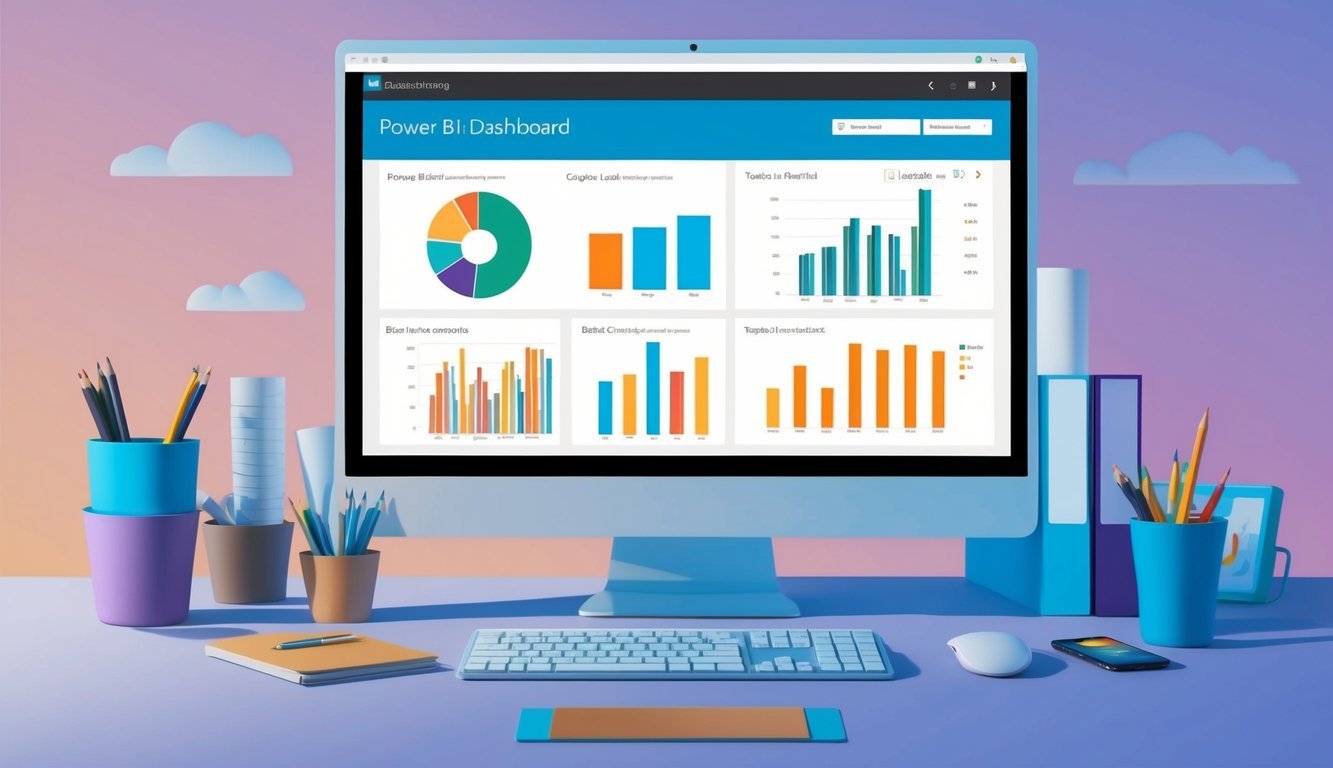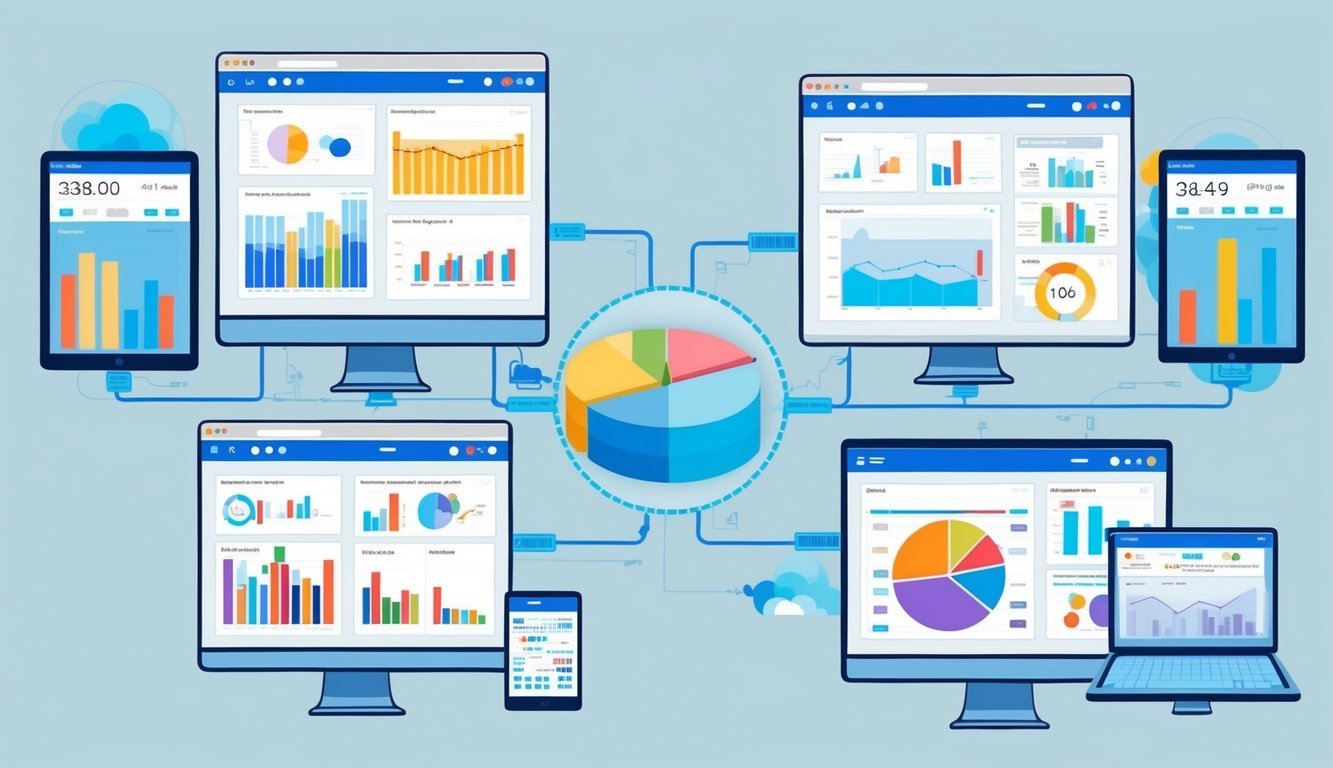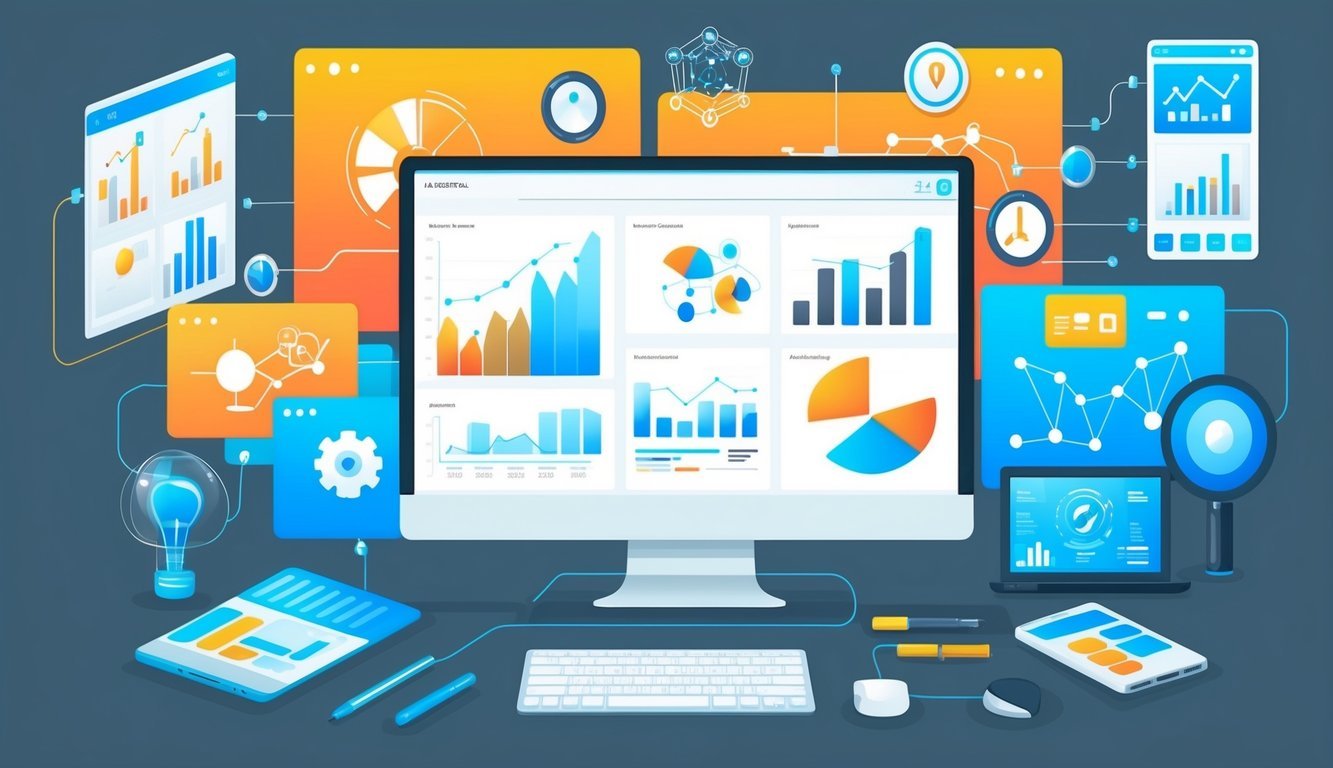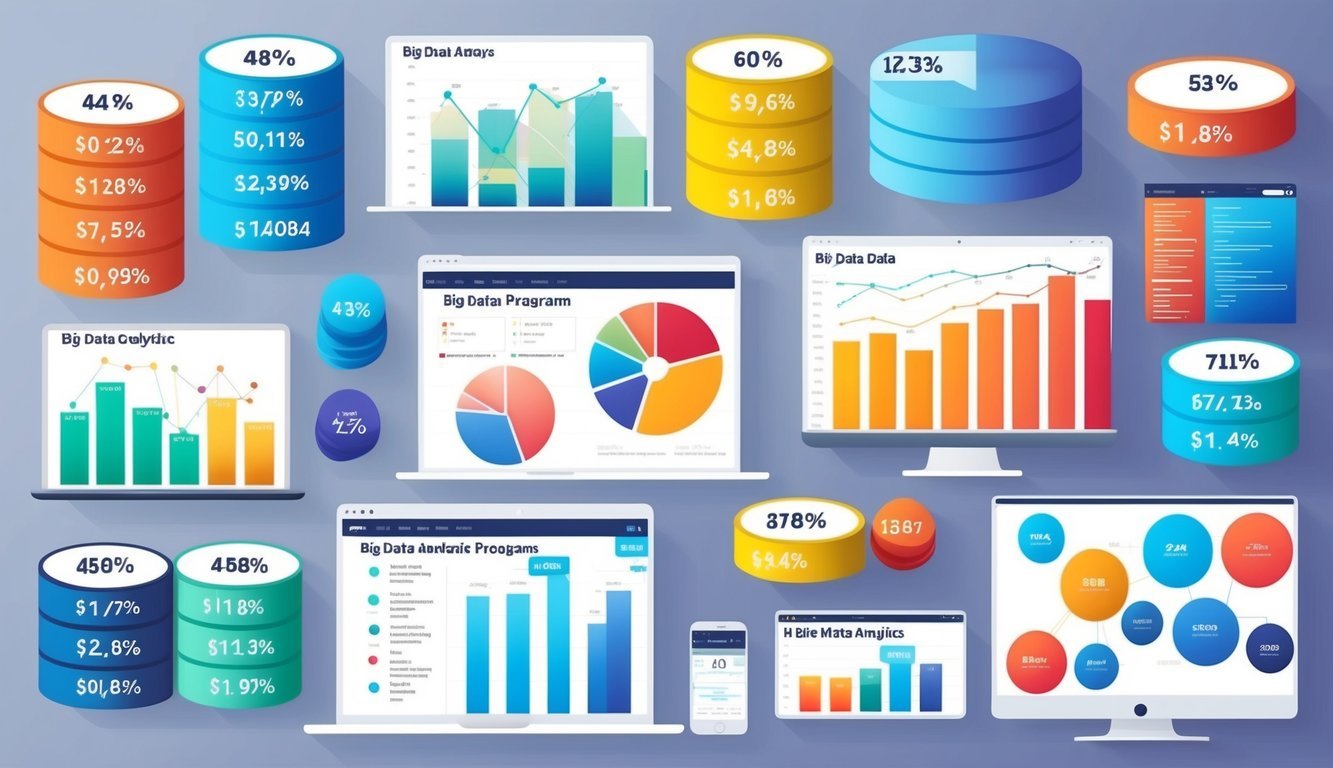Big data is shaking things up in the business world.
Companies are swimming in information, and they need people who can make sense of it all.
That’s where data analytics comes in—and trust me, learning it could be a game-changer for your career.

There are tons of programs that teach data skills, but let’s be real: some are way more valuable than others. The best big data analytics programs equip you with the practical skills employers are actually looking for. You’ll learn how to extract insights from data and tackle real business challenges.
That’s a ticket to getting ahead in just about any job or industry.
1) Hadoop
Hadoop is a superstar in the big data universe.
It’s an open-source framework that helps you manage and process vast amounts of data.
Think of it as a super-smart organizer for all the info your business collects.
You might wonder why it’s such a big deal.
Simple: Hadoop breaks massive tasks into bite-sized pieces, making it easier to handle huge datasets without breaking a sweat.
One of the coolest things about Hadoop is its adaptability.
It can do everything from data storage to complex analytics.
Plus, you don’t need to have the fanciest tech to use it—it’s designed to work well on regular, everyday computers.
If you’re curious, check out Apache Spark! It’s a nifty tool that pairs perfectly with Hadoop, making analytics fast and user-friendly.
You’ll be amazed at how quickly you can churn out insights.
Want to dive deeper? Don’t miss Cloudera, which provides fantastic Hadoop training.
Big names like Dell and Nissan swear by it, so you know it’s top-notch.
And remember, Hadoop isn’t just for the tech giants.
You can leverage it to gain insights in any business, no matter the size.
Give it a shot!
2) Apache Spark
Apache Spark is another major player in the data realm.
It’s lightning-fast and can juggle massive datasets with ease.
If you’re diving into big data, you’ll definitely want to keep this tool on your radar.
Spark is all about quick data processing and plays well with other tools you might already be using.
You can write code in several languages, like Python or Java—no need to limit yourself.
Interested in more learning? There are excellent courses available, like the Apache Spark Certification from Cloudera.
It covers both Spark and Hadoop, which is pretty handy!
Check out Spark’s in-memory computing features.
This makes data processing super quick, which is always a plus.
Spark is consistently rolling out new features, too.
The latest, Spark 4.0, is worth keeping an eye on if you’re serious about big data.
And hey, Spark isn’t just for the big leagues.
It’s fantastic for all sorts of data projects.
Trust me, adding this skill to your toolkit could be a real career boost.
3) Tableau
Tableau is a powerhouse in the data visualization game.
It’s known for transforming complex data into easy-to-digest charts and graphs.
If you’re looking to spot trends and patterns quickly, this tool is for you.
With Tableau, you can connect to nearly any data source.
This means you can pull in info from databases, spreadsheets, and even cloud services.
Talk about flexibility!
The best part? You don’t have to be a coding ninja to create stunning visuals.
Just drag and drop your way to fantastic charts.
Tableau also offers interactive dashboards, allowing you to explore data in real-time.
You can filter, sort, and dive deep into details—all with a few clicks.
It’s like having a personal data assistant at your fingertips!
The tool is great for sharing insights too, whether you’re publishing your work online or embedding it into websites.
You can easily get your findings out there.
With a thriving community, you’ll find loads of resources and tutorials online.
Not to mention certifications that can really help boost your resume and career prospects.
For businesses, Tableau is a secret weapon for making data-driven decisions, turning raw numbers into clear visuals anyone can understand.
4) Microsoft Power BI

Microsoft Power BI is a real game-changer in data analytics.
It’s a powerful tool for data visualization that simplifies understanding complex information.
With Power BI, you can hook up to hundreds of data sources and create eye-catching visuals.
Even if you’re not tech-savvy, you’ll find it user-friendly.
You can build reports and dashboards that update in real-time, keeping you in the loop with the latest data.
Plus, if you’re already using Microsoft products like Excel or Azure, you’ll appreciate how seamlessly Power BI fits into your workflow.
One of the coolest features of Power BI is its AI capabilities.
It helps you discover trends and patterns you might overlook.
Collaboration is pretty painless too.
Whether you’re in the office or working remotely, sharing insights with your team is a breeze.
If you’re interested in advanced analytics, Power BI has your back.
It supports R programming, giving you even more ways to dig into the data.
Understanding Big Data Analytics

Big data analytics is all about making sense of huge data volumes, uncovering patterns that help businesses make smarter decisions.
But what exactly is big data, and why does analyzing it matter?
What Is Big Data?
Big data refers to the enormous amount of information that flows in quickly and in many formats.
It’s way more than traditional tools can handle—think data from social media, sensors, and online transactions.
Big data can be broken down into three main parts:
- Volume: We’re talking loads of it!
- Velocity: It comes in hot and fast.
- Variety: It’s all kinds of data—structured and unstructured.
Big data analytics employs specialized tools to tackle all this data.
These tools can manage both organized and messy data types.
You might wonder how this differs from regular data analysis.
Well, big data tools can handle far more info and work with a variety of data types.
Think of it as a bigger toolbox for bigger projects.
Importance of Analytics
Diving into big data lets businesses grow by spotting trends and tackling problems before they spiral out of control.
Here’s why it’s a big deal:
- Informed decisions: You’re making choices based on solid facts.
- Happy customers: You get to know their preferences and can cater to them.
- Cost savings: You’ll identify ways to work smarter and reduce expenses.
- Fresh ideas: You might just stumble upon new opportunities.
Big data analytics isn’t limited to one sector; it’s used across healthcare, education, and retail to improve operations and outcomes.
By sifting through heaps of data, you can pinpoint what’s working and what’s not, making it easier to fix issues and optimize your business flow.
Career Opportunities in Big Data

The field of big data analytics is brimming with exciting job prospects.
You’ll find a range of roles across different industries, often with hefty paychecks and growth potential.
Let’s break down the demand and the skills you’ll need.
Industry Demand
Companies are on the hunt for data experts like never before. Data scientist jobs are in high demand, but there’s room for data analysts, engineers, and architects too.
While the big firms like tech giants and banks are hiring, smaller companies are also seeking data talent.
Industries like healthcare, retail, and finance are leveraging big data to stay competitive.
The job outlook is promising, with many roles offering salaries exceeding $100,000 for senior positions.
For instance, data architects can make around $137,000 a year.
You could be working on exciting projects such as:
- Predicting customer behavior
- Enhancing product design
- Combatting fraud
- Optimizing supply chains
Skills Required
To thrive in big data, you’ll need a blend of technical and business skills.
Here are some key areas to focus on:
- Programming: Get comfortable with Python or R. SQL is essential for dealing with databases.
- Statistics and math: These are crucial for data analysis.
- Machine learning: A must-have for the advanced analytics toolkit.
- Data visualization: Tools like Tableau will help you present insights effectively.
- Business acumen: Understanding the industry is essential.
Soft skills are equally important.
Being great at:
- Problem-solving
- Teamwork
- Communication
Certifications can give your career a boost.
They signal to employers that you have the skills they need.
Popular options are offered by Google, IBM, and Microsoft.
Don’t forget to keep learning new tools and techniques.
Big data evolves rapidly, and staying updated is key.
Big Data Analytics Tools and Technologies

Big data analytics tools are constantly evolving.
There are always new innovations aimed at helping us make sense of all that data.
Let’s take a look at some popular tools and what’s new on the horizon.
Popular Analytics Tools
Hadoop remains a staple in the big data toolbox.
This open-source system is a champion for storing and processing vast information across multiple systems.
Microsoft Power BI makes creating charts and graphs a breeze.
It turns dry numbers into eye-catching visuals without requiring a technical degree.
Tableau is another favorite for data visualization.
With its drag-and-drop interface, creating stunning dashboards is straightforward—your colleagues will be impressed!
Emerging Technologies
Machine learning is making a significant impact on data tools. Qlik Sense employs AI to assist in trend identification, functioning like a super-smart assistant sorting through your data.
Real-time analytics are gaining popularity.
Tools like Domo provide you with up-to-the-minute insights, showing you what’s happening with your data right now—not just what happened last month.
Cloud-based tools are also on the rise.
They enable you to work from anywhere and don’t require high-end computers.
Plus, they’re always up to date—no effort needed.
Frequently Asked Questions

Data analytics certifications can definitely enhance your career and skill set.
You’ll find a variety of options, from free courses to offerings from major tech companies.
What certifications should I seek to kick off my data analytics career?
To jumpstart your journey, consider getting certified in Hadoop.
It’s a crucial tool for tackling big data challenges.
You might also want to pursue Apache Spark certification.
It’s fantastic for quickly processing large datasets.
Which data analytics certifications are considered the best in the industry?
Tableau is highly respected for data visualization skills.
Microsoft Power BI is another solid choice, especially for its utility in business intelligence and reporting.
Are there any free certifications that can help enhance my data analytics skills?
Absolutely! You can find free courses on platforms like Coursera, which offer introductory classes for data analytics tools.
Plus, some tech companies provide free training modules, making it easy to pick up essential skills without spending a dime.
Can I find top-rated data analytics programs online?
Maryville University’s data science certificate is another excellent online program that offers customizable options to fit your learning style.
What are some reputable data analytics certifications offered by major tech companies?
IBM’s data science professional certificate is a respected option, available through Coursera.
Google also has some sought-after data analytics certifications recognized widely in the industry.
How do certifications from industry leaders like Google compare to university programs in data analytics?
Industry certifications tend to focus on practical skills, teaching you how to use specific tools and solve real-world problems.
On the other hand, university programs offer a broader theoretical foundation, giving you a deeper understanding of data science concepts.

